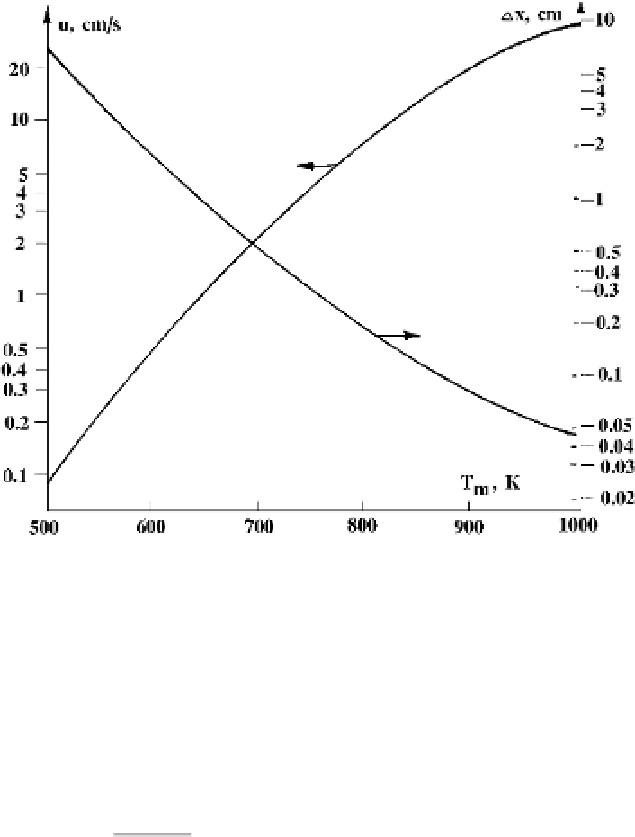Environmental Engineering Reference
In-Depth Information
Figure 5.7
The velocity of the thermal wave of ozone decomposition (
u
) and the width of the
wave front (
Δ
x
) as a function of the final temperature.
Here
D
and
are expressed in square centimeters per second, the air pressure
p
is given in atmospheres, and the temperature is expressed in Kelvin. Next, we
employ the expression
k
dis
10
9
cm
3
/s exp(
11 600/
T
) for the dissocia-
tion rate constant. We can observe how equating
D
and
D
1.0
simplifies the problem.
Then (5.39) gives the thermal wave velocity
T
0
exp
,
1.3
T
2.39
m
5800
T
m
u
D
T
m
where the initial (
T
0
)andfinal(
T
m
) air temperatures are expressed in Kelvin, and
the thermal wave velocity is in centimeters per second. Figure 5.7 illustrates the
temperature dependence for the wave velocity with
T
0
D
300 K. Note that it does
not depend on the air pressure.
The width of the wave front can be characterized by the
Δ
x
D
(
T
m
T
0
)/
(
dT
/
dx
)
max
, where the maximum temperature gradient
is (
dT
/
dx
)
max
D
and the temperature
T
is determined by (5.33). Figure 5.7 gives
this value as a function of the temperature. From the data in Figure 5.7, one can
see that the thermal wave velocity is small compared with the sound velocity. This
means that the propagation of a thermal wave is a slow process in contrast to that
for a shock wave.
u
(
T
T
0
)/

